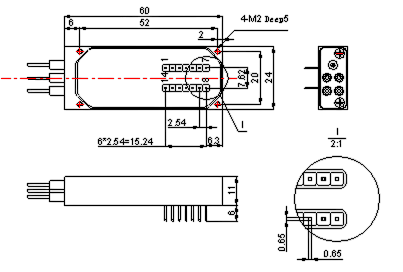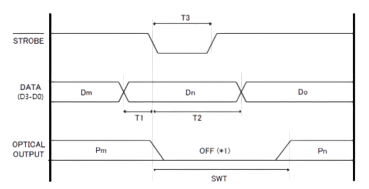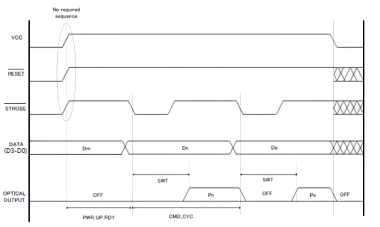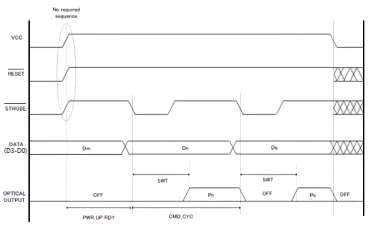
MEMS-1XN (N ≤ 8) PM optical switch
1. Product introduction
1. Application:
MFSW-1X4 optical switch type single mode optical switch module is a light path switching function of the device, which has the following purposes:
Multiple optical monitoring in optical transmission system
LAN multi-light source / detector automatic transfer, light sensing multi-point dynamic monitoring system
Optical test system for optical fiber, optical devices, network and field engineering cable test
Optical devices installed
2. Product Features:
Low loss, high reliability
Simple parallel or serial port interface control
Modular design
3. Product performance:
Working wavelength:1550±20nm
Fiber type:PM1550(9/125)
Connector type:FC/APC(Slow axis alignment)
Fiber length:500±50 mm
Insertion loss:≤1.2dB
Return Loss:≥50dB
Polarization dependent loss:≤0.15 dB
Wavelength dependent loss:≤0.3 dB
Temperature dependent loss:≤0.3 dB
Min. Extinction Ratio: ≥15dB
Repeatability:≤±0.05dB
Channel crosstalk:≥50dB
Switching time:≤15ms
Optical power:≤500mW
Durability:≥10 billion
Operating temperature:-5~+70℃
Storage temperature:-40~+85℃
Power supply:DC 5V ± 5%
2. Dimension Chart

Figure 1 Dimensions
When installing the optical switch module, the optical fiber must not be bent excessively (refer to FIG. 2), so as not to affect the performance index of the optical switch module

Figure 2 Optical installation diagram
3 . Pin Configuration
4. Specification Digital Interface Electrical
|
ELECTRICAL INTERFACE |
SPECIFICATION |
|
|
1 |
Supply Voltage |
5V ± 5% |
|
2 |
Power Consumption |
< 500 mW |
|
3 |
Electrical control method |
UART or Parallel mode (TTL level) |
5. Digital Interface Pin Assignment
|
PIN # |
NAME |
DESCRIPTION |
|
1 |
NC |
No physical internal connection |
|
2 |
VCC |
Power Supply (5V) |
|
3 |
STROBE |
Falling Edge Active (input) |
|
4 |
GND |
Signal Ground |
|
5 |
D0 |
Data 0 (input) |
|
6 |
D1 |
Data 1 (input) |
|
7 |
D2 |
Data 2 (input) |
|
8 |
D3 |
Data 3 (input) |
|
9 |
UART TX |
UART Transmit (output) |
|
10 |
UART RX |
UART Receive (input) |
|
11 |
GND |
Case Ground |
|
12 |
RDY |
Ready (output), used for internal debugging |
|
13 |
MODE |
0=TTL, 1=UART (input) |
|
14 |
RESET |
0=Reset (input) |
Note:
(1). The digital interface is LVTTL level.
(2). Input control signal threshold level: Input logic high: 2V min. Input logic low:0.8V max
(3). All unused inputs of the device must be held at logic high or GND to ensure proper device operation.
4 . Parallel mode
- Control Truth Table
|
Select CH |
PIN# |
Comment |
|||
|
D3 |
D2 |
D1 |
D0 |
||
|
Default |
N/A |
N/A |
N/A |
N/A |
Default CH is off(*) |
|
P1 |
0 |
0 |
0 |
0 |
|
|
P2 |
0 |
0 |
0 |
1 |
|
|
P1 |
0 |
0 |
1 |
0 |
|
|
P2 |
0 |
0 |
1 |
1 |
|
|
(*1)When power(VCC)is removed from the switch, it will go go the off(dark) position. |
|||||
2. Control Truth Table
|
Symbol |
Parameter (TTL mode) |
Min. |
Typ. |
Max. |
Unit |
|
T1 |
Data setup time |
1 |
ms |
||
|
T2 |
Data hold time |
10 |
ms |
||
|
T3 |
Strobe pulse width |
1 |
ms |
||
|
SWT |
Optical output switching |
50 |
ms |

3. Reset Control Timing
|
Symbol |
Parameter |
Min. |
Typ. |
Max. |
Unit |
|
RST |
Reset pulse width |
100 |
ms |
||
|
MCU_RDY |
MCU Ready |
20 |
ms |
||
|
RST_OFF |
Reset Power OFF |
30 |
ms |

Power/STROBE Sequence
|
Symbol |
Parameter (TTL mode) |
Min. |
Typ. |
Max. |
Unit |
|
PWR_UP_RDY |
Power up Ready |
200 |
ms |
||
|
CMD_CYC |
Command Cycle |
50 |
ms |

5 . Precautions
Before using the optical switch module, in order to avoid any damage to the optical switch module, please read the following rules carefully:
1. Before use, clean the optical fiber end of the connector with alcohol cotton. Please take a dust cap when not in use to prevent the dust or other dirt from polluting or damaging the fiber end face. Fiber end damage or contamination will affect the optical switch module performance.
2. Do not pull, fold and twist the optical fiber, so as to avoid fiber damage.
3. Detailed pin definition for control interfaces, to ensure that the connection is correct. After determining the connection is correct, then power-up operation.
4. When the external circuit needs to be changed, please turn off the power, then disconnect the module control line, the control line is prohibited with hot-swappable.
5. Do not look directly at the fiber end when the optical switch module has an optical signal input. Laser radiation is not visible, but will cause harm to the human eye!
6. The device should be fireproof, shockproof, to avoid storage and work in an over-humid environment.
7. The device is a precision optical device, shall not be disassembled, so as not to damage.
If you need more support , Please contact us.


